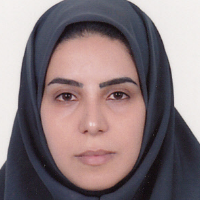Analysis of the Discourse of Quranic Stories and Its Relation to the Discourse of the Ignorant Society Based on the PDAM Method
With the emergence of discourse analysis in the linguistic arena, critical discourse analysis entered linguistics as a modern method to study cultural and social changes. One of the critical discourse analysis methods is the Practical Discourse Analysis Method (PDAM). This method investigates the hidden and apparent layers of the text by analyzing the four layers of surface-surface, depth-surface, surface-deep, and deep-deep. The surface-surface layer is the uppermost layer of the text which has the external manifestation and consists of expressions, sentences, and terms. The deep-surface layer determines the reason behind the selection of a term, a special kind of combination and grammatical structure by the writer for the reader. The surface-deep layer is the uppermost layer of the depth of the text and is similar to interpretation. In the last layer (i.e. deep-deep), text production is studied in cultural and social structures. The present descriptive-analytical study attempts to analyze three Quranic stories that criticize the ignorant society using the PDAM method. Literature is one of the branches of art that has a crucial role in humanities and gentle feelings. Although people are very different in race, color, body structure, and other qualities, instincts, feelings, and tendencies are similar in all of them. A story can easily stimulate various ranges of human feelings and convince the person by self-awareness to give up moral vices by producing a proper pattern.The language of a story is a language by which the writer can express his purpose simpler and more explicitly because it is understandable for all people. The story is the most consistent form of language that occupy the mind and heart with persuasive messages. Quranic stories relate all kinds of human habits and manners to the repetition of human reactions at any place and at any time. Manners of arrogant people, enemies, pagans, idolaters, and resurrection deniers are such behaviors. Although Quranic stories are for religious guidance and learning, serving religious purposes does not prevent blurting artistic properties in narrating a story because one of the artistic withers of the Holy Quran is story narration.In the divine speech, story scenes are pictured in a way that the reader feels watching the crucial role of the story, living with them, and perceiving their spiritual states such as fear, love, delight, sorrow, and irritation deeply. With these techniques, a person’s motivation will be duplicated in following the story, as if they closely watch them and touch their reasons for aberration.The selected Quranic topics are the common topics in the ignorant society that can be seen in other societies as well. The reader does not separate his fate from the history of the preceding people and is attracted to follow the story. The stories of the Holy Quran are appropriate cases of the conflict between right and wrong, guidance and misguidance, and good and evil. There have been examples of such conflicts in all times and places, while the result has ended in favor of the good people, and humiliation and defeat have been given to the bad people.The variety of the history of the preceding people from the miraculous speech of the divine word illustrates the diversity of the entrenchment of the deniers of God, the many excuses and the application of the same methods of humanity in confronting the monotheistic invitation, which in addition to the encouragement of the Prophet, inspired him by the experiences and reactions of the previous prophets in encountering different ethnic groups.One of the important results of examining the critical discourse on the iconoclasm story of Ibrahim (PBUH) is a kind of instruction to the Prophet Muhammad (PBUH); for the action he will take in the conquest of Mecca in not too distant future and crush the installed idols like Ibrahim. In fact, the narration of the story of the iconoclasm of Ibrahim is a kind of promise, hope, and comfort to the Prophet Muhammad (PBUH). A promise that the defeat of Mecca by Muslims is certain. The difference is that Ibrahim broke the idols in the temple, but Prophet Muhammad (PBUH) broke the idols that were constantly in front of everyone's eyes.One of the important results of the story of Uzir's hundred-year sleep and the part-by-part joining together of Uzir’s donkey is the expression of the quality of the true revival in the resurrection. The important point in the resurrection is the power that can collect the decayed bones and restore them to their original form. Disbelief in this power has been brought up many times under different titles by the people of the time of the Prophet (PBUH).The story of Ibrahim and his technique of worshiping heavenly bodies is like a mirror in which the past, present, and future of Muhammad's invitation can be seen through Ibrahim’s story. In the ignorance era, like the time of Prophet Ibrahim (PBUH), there were various goddesses, and the sun, moon, and stars were among the most common of these goddesses.Analyzing the stories related to the criticism of the ignorant society leads us to the conclusion that belief in different gods, doubts about resurrection, and imitation of ancestors existed in different eras of history. Analyzing the critical discourse of Quranic stories, in addition to instructing the application and benefit of discourse styles, indicates the appropriateness of the issues raised in the ignorant society with modern ignorance. Although in the discussion of theology and the affirmation of unity in creation the verses are based on the proof of order and nature, parables and stories are used more in the issues related to beliefs, societies, ethics, and the expression of traditions and common false habits.
-
Evaluating the quality of tone translation strategies in the novel "Brid Al-Lil" written by "Hodi Barkat
Fatemeh Manouchehri, *
Journal of Interdisciplinary Studies in Arabic Language and Literature, -
The Irony of Fakhr Razi's Complaining Style to Sheikh Abdul Qahir Jurjani in the Subject of Metonymy (Emphasizing Intellectual Implication)
Elham Baboli Bahmeh, Mohammadebrahim Khalifeh Shoshtari*, , Ali Najafi Ivaki
Iranian Association of Arabic Language and Literature, -
Analysis of semantic domains of words in the Holy Qur'an, a case study Surah Al-Waki’ah
Mina Azimifar, Abbas Eghbaly *, Rohollah Saiiady Nezhad
Journal Linguistic Research in the Holy Quran, Spring-Summer 2024 -
The Anxiety of Influence in Arabic poetry of the third and fourth centuries based on Harold Bloom's perspective (Sample of reading: Abou Al-Tayeb Motanabbi)
Mina Mohammadi Saremi, *,
Journal of Arabic Language & Literature, -
Analyzing the challenges of remote virtual Arabic education, according to the opinions of Iraqis teachers and students
Salam Jamil Sakban Al-Hamidawi, Narges Ganji *,
Arabic Language and Literature, -
Analysis of three stories of the Quran based on the operational model of Pedam
Fatemeh Mohammadi, ABBAS EGHBALY, Peykani *, Hossein Imanian
Quranic Studies and Islamic Culture,





